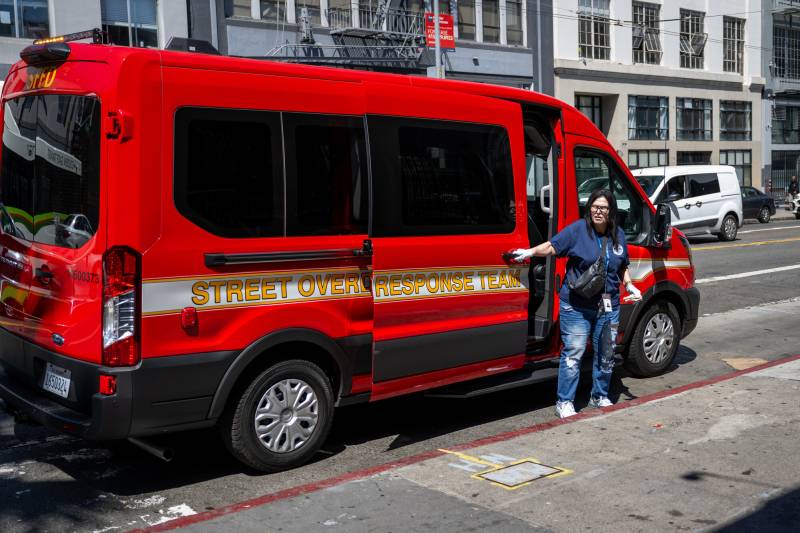“The purpose of this campaign is to educate people that treatment and support services are possible in San Francisco to help people with fentanyl addiction and other substance-use disorders,” Colfax said.
He noted that overdose deaths in San Francisco have been slowly declining – down by about 20% this year to date – as the city has expanded access to treatment programs.
The announcement follows the department’s recent efforts to promote life-saving opioid drug-treatment medications, such as buprenorphine and methadone.
Health officials on Tuesday also announced the launch of a separate initiative: a new, on-demand treatment program, open daily, aimed at connecting people suffering from substance-use disorders with medical professionals who can immediately prescribe buprenorphine.
Treatment options will be accessible in hospitals and 14 primary care clinics throughout the city, along with in permanent supportive housing programs, shelters and in jails.
The Living Proof ads will also highlight SFDPH’s Behavioral Health Access Line, a 24/7 call center to access the city’s substance use and mental health services.
“There are people in our community who don’t know where to go for help,” said Dr. Hillary Kunins, the department’s director of Behavioral Health Services. “So our goal with the Living Proof campaign is to give people the information, the hope and the direction.”
Supervisor Matt Dorsey on Tuesday described his own journey to sobriety after prolonged struggles with addiction. He said the campaign’s focus on real San Francisco residents in long-term recovery is paramount.
“It is something that I carry with me,” he said, noting the importance of “giving the recovery community a seat at the table.”
Juliana Gurrola Nuño and her partner Michael Alvarez, also featured in the media campaign, both struggled for years with serious opioid addictions and now help guide others to recovery.
“Four years ago, we would have never imagined having a beautiful daughter or a nice home to live in,” said Alvarez, who is now a community health worker. “We want people who are using fentanyl or any other substance to know that there are a lot of opportunities to recover from drug addiction.”

